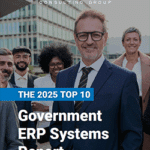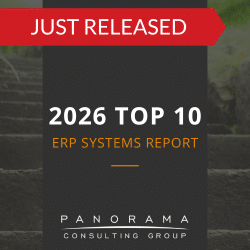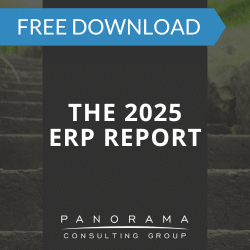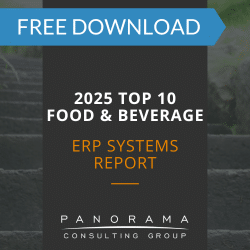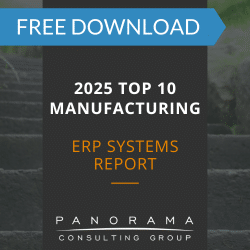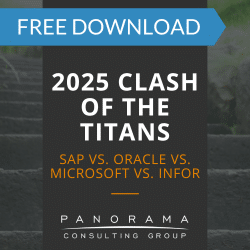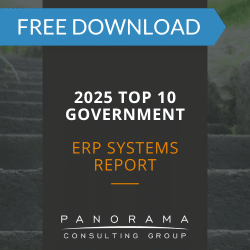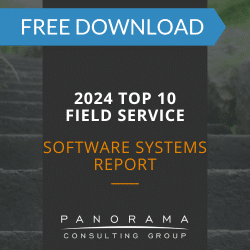Key Takeaways
- An ERP replacement assessment helps organizations determine whether a full system replacement is necessary or if targeted improvements could deliver similar value.
- ERP assessment best practices include engaging cross-functional stakeholders, ensuring data ownership clarity, and working with independent advisors.
- An ERP replacement business case should compare the cost of replacement against the risks of maintaining outdated or over-customized systems.
- ERP assessments examine core factors such as data integration, user adoption, and the system’s ability to support future-state operations.
For many organizations, the conversation about ERP replacement begins with pain points. Legacy systems no longer support business growth. Customizations have created fragile integrations and rising support costs. Department leaders feel stuck, unable to access timely data.
The knee-jerk reaction is to rip and replace.
However, experienced executives know that replacing an ERP system is among the most capital-intensive and disruptive decisions an organization can make. Your business case must hold up under executive scrutiny, cross-departmental debate, and shifting market conditions.
This is where an ERP replacement assessment becomes essential.
The 2026 Top 10 ERP Systems Report
What vendors are you considering for your ERP implementation? This list is a helpful starting point.
What an ERP Assessment Can Reveal
An ERP replacement assessment gives leaders the clarity to evaluate whether replacement is justified—or whether optimization, integration, or phased modernization could achieve similar results with less disruption.
Here are five critical areas an ERP assessment should evaluate:
1. Business Process Alignment
Does your current system support the way your business actually operates today? Or are employees bypassing the system using spreadsheets, shared drives, and shadow IT?
A gap analysis can identify where ERP functionality falls short of current operational needs. It also distinguishes between configuration issues and fundamental limitations of the platform itself.
2. Integration and Data Flow
Legacy ERP systems often lack native integration with modern tools (CRM, eCommerce, supply chain management systems, etc.).
In an ERP assessment, organizations should map how data moves across systems to identify where data flow breaks down. Integration gaps can cause delays in reporting, compliance issues, and inconsistent customer experiences.
The goal is to determine whether those integration gaps justify a full system replacement or whether more targeted fixes—such as middleware or APIs—could extend the system’s value.
3. User Experience and Adoption
During an ERP assessment, stakeholder interviews and user surveys can reveal pain points, such as missing functionality or a lack of training. Understanding the root cause of low adoption is essential before making assumptions about system replacement.
Our ERP advisory team works with clients to evaluate cultural readiness, leadership alignment, and resistance points through change readiness surveys and workshops. By combining user feedback with organizational change management practices, leaders gain a clearer picture of whether poor adoption reflects system limitations, governance gaps, or cultural resistance.
4. Total Cost of Ownership (TCO)
An ERP replacement business case must consider the full lifecycle cost of maintaining the current system, including license fees, support, internal resource time, lost productivity, and technical risk.
A forward-looking TCO model should span at least five years, incorporating scenarios for growth, compliance changes, and technology upgrades.
In many of Panorama’s assessments, organizations discover that sunk costs in legacy systems are outpacing the long-term investment required to modernize.
A public investment management organization recently went through this process. The agency engaged Panorama to support the evaluation, selection, and planning of a new ERP platform to replace disparate administrative systems.
Panorama conducted an ERP assessment that included a detailed TCO model alongside a broader business case. The analysis highlighted escalating maintenance expenses, a high dependency on manual workarounds, and elevated compliance risk.
Ultimately, the organization was able to secure board approval to move forward with an ERP solution that streamlined workflows, reduced manual processes, and established a single source of truth for financial data.
5. Strategic Fit and Future Readiness
The final question is whether the current ERP system aligns with your future-state strategy. If your business is shifting toward direct-to-consumer channels, global expansion, or new service models, the ERP must be able to adapt.
An assessment should map your current system’s capabilities against the strategic differentiators that define how your organization competes and grows. Key areas to evaluate include:
- Scalability: Can the system support projected growth?
- Cloud readiness: Is the platform compatible with a cloud-first strategy?
- Advanced analytics: Does the ERP support predictive insights, such as demand forecasting, risk modeling, and cost optimization?
- Future-state alignment: Does the system align with the organization’s digital roadmap, including automation and AI readiness?
ERP Assessment Best Practices for Executive Teams
Leaders evaluating ERP replacement need a structured, unbiased process that ties technology decisions to business outcomes. Here are four ERP assessment best practices to guide the effort:
1. Involve stakeholders across functional areas.
Technical teams may understand the system’s limitations, but operations, finance, and customer-facing teams know where friction exists. Cross-functional input in an ERP assessment ensures a holistic view of both technical and organizational challenges.
2. Evaluate data ownership and Master Data Management.
Fragmented master data, unclear ownership, and inconsistent definitions often undermine ERP effectiveness. Use an assessment to examine how data is created, maintained, and trusted across the enterprise—and how that affects reporting and automation.
3. Use independent advisors.
Independent ERP consultants have no financial ties to software vendors. This ensures that recommendations are based on organizational needs, not referral fees or implementation quotas.
For example, if an ERP assessment reveals that system inefficiencies stem from poor data governance rather than core software limitations, your consultant should recommend enhancing your current system or beginning a phased modernization, instead of implementing an entirely new system.
4. Quantify the cost of doing nothing.
An ERP replacement business case should weigh modernization against the risks of status quo—whether that is compliance exposure, operational inefficiency, cultural resistance, or opportunity cost from delayed innovation.
Learn More About ERP Replacement Assessments
An ERP replacement assessment challenges assumptions, identifies hidden risks, and ensures your business case holds up over time.
At Panorama Consulting, we help organizations step back and see the full picture before making high-stakes technology decisions. Our ERP advisors are vendor-neutral and strategically focused—because the right ERP decision is one that works long after go-live.


